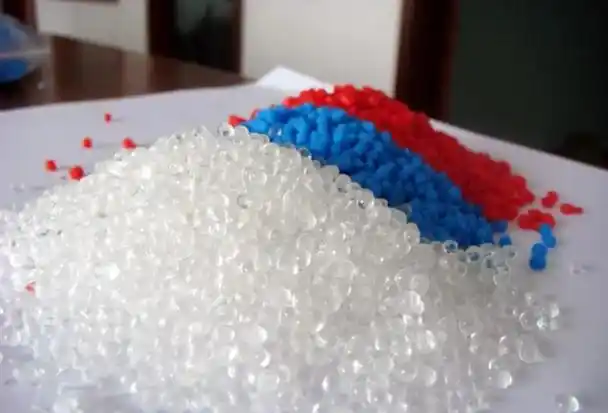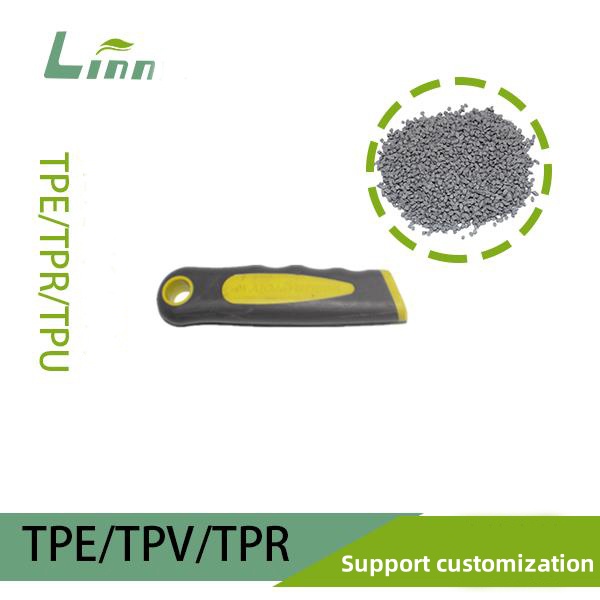Having spent over a decade in the plastics industry, I’ve encountered my fair share of head-scratchers on the factory floor. One question that pops up repeatedly, especially from engineers and manufacturers new to Thermoplastic Elastomers (TPE), is why their TPE material isn’t melting as expected during processing. It’s a frustrating issue that can halt production and raise concerns about material quality or equipment. Drawing from years of troubleshooting in injection molding plants and client consultations, I’ll walk you through the reasons behind TPE’s reluctance to melt, how to address it, and practical tips to ensure smooth processing. Let’s dive into the science and real-world solutions for this common challenge.

Understanding TPE and Its Melting Behavior
Before we tackle why TPE might not melt, let’s clarify what TPE is. TPE is a family of materials that combine the elasticity of rubber with the processability of thermoplastics. Unlike thermoset rubbers, which are permanently set after curing, TPE can be melted and reshaped multiple times, making it a go-to for applications like medical tubing, soft-touch grips, and automotive seals. The most common TPE type is based on styrene-ethylene-butylene-styrene (SEBS), but others, like TPU (thermoplastic polyurethane) and TPV (thermoplastic vulcanizate), are also widely used.
The expectation is that TPE, being a thermoplastic, should melt smoothly under heat. However, when it doesn’t, it can lead to confusion. Is it a material defect? A processing error? Or something else entirely? From my experience, the issue usually stems from a combination of material properties, equipment settings, and processing conditions. Below, I’ll break down the key reasons and solutions, grounded in my hands-on work with TPE.
Reasons Why TPE Doesn’t Melt
1. Incorrect Processing Temperature
One of the most common reasons TPE doesn’t melt is that the processing temperature is too low. TPEs have a specific melt temperature range, typically between 160°C and 250°C (320°F to 482°F), depending on the grade and formulation. If your equipment is set below this range, the material may remain solid or only partially melt, leading to clogs or poor flow.
Why It Happens: Different TPE grades (e.g., SEBS, TPU, or TPV) have unique melt profiles. For instance, SEBS-based TPEs often require 180°C to 220°C, while TPU may need 200°C to 240°C. Using a one-size-fits-all temperature setting, especially if you’re transitioning from another material like TPR or PP, can cause issues.
Personal Experience: Early in my career, I worked on an injection molding project where the TPE wouldn’t flow properly. After hours of troubleshooting, we realized the barrel temperature was set for a lower-melting material from the previous run. Adjusting to the manufacturer’s recommended 200°C solved the issue instantly.
Solution: Always check the material datasheet for the recommended melt temperature and mold temperature. Increase the barrel temperature in increments of 5-10°C while monitoring flow. Ensure the entire system, including the nozzle and runners, is heated adequately to avoid cold spots.

2. Material Contamination
Contamination is another culprit that can prevent TPE from melting properly. If foreign materials, like other plastics or additives, mix with the TPE, they can alter its melting behavior, leading to inconsistent flow or blockages.
Why It Happens: Contamination often occurs during material handling or when switching between materials on the same equipment. For example, residual polypropylene (PP) or PVC in the hopper can mix with TPE, creating a blend with unpredictable melting points. Moisture contamination is also common, as TPE can absorb water, leading to hydrolysis during heating, which degrades the material.
Anecdote: I once consulted for a factory where TPE pellets were stored in an open container near a PVC processing line. Tiny amounts of PVC dust contaminated the TPE, causing it to clump and resist melting. A thorough cleaning of the hopper and stricter storage protocols fixed the problem.
Solution: Purge the machine thoroughly before processing TPE, using a neutral purging compound. Store TPE pellets in sealed containers in a dry, clean environment. If moisture is suspected, dry the material at 80°C to 100°C for 2-4 hours before processing, as per the supplier’s guidelines.
3. Improper Screw Design or Shear Heating
The screw design in your injection molding or extrusion machine plays a critical role in melting TPE. TPEs are sensitive to shear heating, where excessive mechanical energy from the screw generates heat that can degrade the material or cause uneven melting.
Why It Happens: TPE requires a low-shear screw with a compression ratio of 2:1 to 3:1 to ensure gentle heating. A high-shear screw, designed for rigid plastics like ABS, can overheat TPE, leading to degradation or gel formation, which mimics a “non-melting” issue. Conversely, insufficient shear can prevent proper melting.
Experience Note: During a high-volume production run for soft-touch grips, we noticed the TPE was forming gels, clogging the nozzle. Switching to a low-shear screw designed for elastomers improved flow and eliminated defects.
Solution: Verify that your machine’s screw is suitable for TPE processing. Consult the equipment manufacturer or TPE supplier for recommendations. Adjust screw speed to balance shear heating, typically keeping it between 50-150 RPM, depending on the machine.
4. Material Degradation
If TPE is exposed to excessive heat, prolonged residence time, or repeated processing cycles, it can degrade, leading to a loss of thermoplastic properties. Degraded TPE may appear to “not melt” because it forms gels or cross-links, behaving more like a thermoset.
Why It Happens: TPEs, especially SEBS-based ones, are sensitive to thermal degradation if held at high temperatures for too long. Overheating can break down the polymer chains, reducing flowability. Regrind (recycled TPE) is particularly prone to this issue, as repeated heating cycles weaken the material.
Real-World Example: In a project for automotive seals, we reused TPE regrind to cut costs. The material started clumping and wouldn’t melt properly after the third cycle. Testing revealed that the polymer had degraded, so we limited regrind to 20% of the mix, which restored performance.
Solution: Minimize residence time in the barrel by optimizing cycle times. Avoid overheating by staying within the recommended temperature range. If using regrind, limit it to 10-20% of the total material and ensure it’s from a single, clean source.

5. Incorrect Material Grade
Not all TPEs are created equal. Choosing the wrong grade for your application or processing method can result in melting issues. TPE grades vary in molecular weight, additive content, and viscosity, all of which affect melt behavior.
Why It Happens: A high-viscosity TPE grade designed for extrusion may not melt properly in an injection molding setup, which requires lower viscosity for better flow. Similarly, a grade with high filler content (e.g., calcium carbonate) may require higher temperatures or specialized equipment.
Lesson Learned: I once worked with a client who ordered a TPE grade for blow molding but used it in injection molding. The material wouldn’t flow, causing production delays. Switching to a lower-viscosity grade resolved the issue.
Solution: Confirm with your supplier that the TPE grade matches your processing method and application. Request a melt flow index (MFI) test to ensure compatibility. If unsure, start with a general-purpose TPE grade and adjust as needed.
6. Equipment Issues
Sometimes, the issue isn’t the TPE but the equipment. Malfunctioning heaters, clogged nozzles, or worn components can prevent proper melting.
Why It Happens: Faulty heater bands may fail to reach the required temperature, leaving TPE in a semi-solid state. A clogged nozzle or runner system can also restrict flow, mimicking a melting issue. Worn screws or barrels may not provide enough shear to melt the material uniformly.
Anecdote: During a night shift, a client called me in a panic because their TPE wasn’t melting. After checking the machine, we found a burnt-out heater band in the barrel. Replacing it and recalibrating the temperature settings got production back on track.
Solution: Perform regular maintenance on your equipment, checking heater bands, thermocouples, and nozzles. Use a pyrometer to verify actual barrel temperatures, as displayed readings can be inaccurate. Clean the screw and barrel regularly to prevent buildup.
Practical Tips for Successful TPE Processing
Based on my years of trial and error, here are some actionable tips to ensure TPE melts and processes smoothly:
Consult the Datasheet: Always start with the manufacturer’s recommended settings for melt temperature, mold temperature, and drying conditions. These are tailored to the specific TPE grade.
Purge Thoroughly: Before running TPE, purge the machine with a compatible material to remove residues. I typically use a low-density polyethylene (LDPE) purge compound for TPE.
Dry the Material: TPE can absorb moisture, especially in humid environments. Dry it at 80°C to 100°C for 2-4 hours before processing to prevent hydrolysis.
Optimize Screw Speed: Keep screw speeds low to moderate (50-150 RPM) to avoid excessive shear heating, which can degrade TPE.
Test Small Batches: If you’re working with a new TPE grade, run a small test batch to dial in settings before full production. This saved me countless headaches early in my career.
Monitor Residence Time: Keep cycle times short to minimize the time TPE spends in the hot barrel, reducing the risk of degradation.

Comparison of Common TPE Processing Challenges
To summarize the key issues and solutions, here’s a table based on my experience troubleshooting TPE melting problems:
| Issue | Cause | Symptoms | Solution |
|---|---|---|---|
| Incorrect Temperature | Barrel or mold temperature too low. | TPE remains solid or flows poorly. | Increase temperature to supplier’s recommended range (e.g., 180°C-220°C). |
| Contamination | Foreign materials or moisture in TPE. | Clumping, uneven flow, or defects. | Purge machine, store TPE in sealed containers, dry before use. |
| Improper Screw Design | High-shear screw or incorrect compression ratio. | Gels, degradation, or uneven melting. | Use low-shear screw with 2:1 to 3:1 compression ratio, adjust speed. |
| Material Degradation | Overheating or excessive regrind use. | Gels, cross-linking, or loss of flow. | Minimize residence time, limit regrind to 10-20%, avoid overheating. |
Safety and Environmental Considerations
When troubleshooting TPE melting issues, safety is paramount. Overheating TPE can release volatile organic compounds (VOCs), so ensure proper ventilation in the processing area. Always wear protective gear when performing burn tests or handling hot equipment. From an environmental perspective, TPE is recyclable, but degraded material may not be suitable for reuse. Dispose of contaminated or degraded TPE according to local regulations to minimize environmental impact.
Personal Insight: I once overlooked ventilation during a high-temperature TPE run, and the fumes caused discomfort for the team. Installing better exhaust systems and enforcing safety protocols became a priority after that.
Conclusion
When TPE doesn’t melt as expected, it’s often a signal that something in the process—temperature, contamination, equipment, or material choice—needs adjustment. My years in the industry have taught me that patience and systematic troubleshooting are key. Start by checking the material datasheet, verify your equipment settings, and ensure proper material handling. If the issue persists, consult your supplier for grade-specific advice or consider switching to a more suitable TPE grade.
By understanding the nuances of TPE’s melting behavior and applying the solutions outlined above, you can avoid costly downtime and produce high-quality parts. If you’re facing this issue on the factory floor, don’t hesitate to reach out to your material supplier or an experienced engineer—I’ve been there, and I know how frustrating it can be. With the right approach, you’ll have your TPE flowing smoothly in no time.

Frequently Asked Questions
Q: Can I use the same temperature settings for all TPE grades?
A: No, each TPE grade has a specific melt temperature range. Check the supplier’s datasheet for the recommended settings, typically between 160°C and 250°C.
Q: How do I know if my TPE is contaminated?
A: Look for signs like clumping, uneven flow, or unusual odors. Moisture contamination may cause bubbles or splay in the molded part. Dry the material and purge the machine to confirm.
Q: Why does my TPE form gels during processing?
A: Gels are often caused by excessive shear heating or material degradation. Check your screw design and reduce screw speed. Ensure the material hasn’t been overheated or over-recycled.
Q: Is it safe to reuse TPE regrind?
A: Yes, but limit regrind to 10-20% of the mix to avoid degradation. Ensure the regrind is clean and from the same batch to maintain consistency.
Q: What should I do if my equipment isn’t melting TPE properly?
A: Verify heater band functionality with a pyrometer, clean the nozzle and runners, and check screw condition. If issues persist, consult the equipment manufacturer.
Q: Can TPE be processed on equipment designed for rigid plastics?
A: Yes, but you may need a low-shear screw and adjusted settings. High-shear screws designed for rigid plastics like ABS can degrade TPE.





